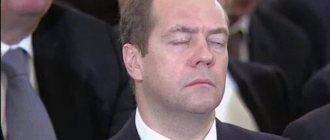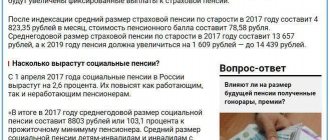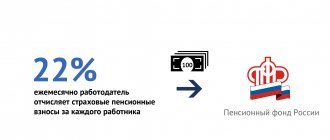The abbreviation OPS stands for compulsory pension insurance and refers to the pension system. Compulsory pension insurance is a state pension program that began operating in the Russian Federation in 2002, after the pension reform in the compulsory pension system. Explanation in the Pension Fund (non-budgetary fund) is given as a system of functioning of participants (insurers, policyholders and insured persons) within the framework of the state program for the formation of a funded pension for all citizens of working age, on account of which insurance contributions are made.
Since 2002, fundamental changes have occurred in the Russian pension system. The distribution system was replaced by the distribution-storage system. Thus, since 2002, all citizens born in 1967 and younger began to form an accumulative pension capital, which amounts to 6% of monthly official earnings, can be managed by the owner and inherited by his legal successors. You can receive the right to pay a funded pension only when the pension grounds arise.
Principles of compulsory pension insurance in the Russian Federation
Compulsory pension insurance (MPI) is a whole system of measures created by the state to partially compensate citizens for their lost income after retirement. Citizens who are covered by compulsory health insurance are called insured persons .
The principles of the OPS are based on the introduced system of individual registration of citizens and allow:
- take into account the receipt of insurance payments in the personal account of each insured person;
- record data about his place of work and duration of work;
- determine the number of accumulated pension points to calculate a future pension.
Payments in the OPS system are made upon the occurrence of an insured event , i.e. reaching retirement age, loss of ability to work due to disability, loss of a breadwinner.
The key participants in the OPS system are the insured persons themselves, policyholders and insurers.
Policyholders are the direct payers of insurance premiums. The role of such participants in the OPS may include:
- organizations;
- individual entrepreneurs (IP);
- individuals paying contributions for themselves and for others;
- self-employed population (notaries, lawyers, etc.)
As for insurers , their role may be:
- in terms of insurance pension: Pension Fund of the Russian Federation;
- in terms of funded pensions: various non-state pension funds (NPFs).
The main administrator here, of course, is the Pension Fund, since it manages all pension funds in the compulsory pension system.
Contributions to OPS - what are they?
All funds received by the Federal Tax Service (until 2020 - by the Pension Fund of Russia) are recorded on individual personal accounts of citizens in accordance with the current system of individual (personalized) accounting by insurance certificate number (green laminated card).
Insurance premiums for compulsory health insurance are amounts accrued from all payments and other remunerations in favor of the employee and paid by the employer in accordance with the law. These contributions represent the future pensions of these employees and constitute the pension benefits of current beneficiaries.
The distribution of contributions is carried out in accordance with current regulations and the pension option chosen by the citizen.
Direct transfer of funds is carried out by the policyholder , who performs two important functions:
- payment of contributions for their employees ;
- own payments for yourself .
As for citizens - insured persons who have received an insurance certificate of compulsory pension insurance, these include:
- citizens of the Russian Federation;
- foreigners permanently or temporarily residing in our country;
- stateless persons.
Summary
Important conclusions regarding the current pension insurance system in Russia:
- Insurance upon reaching retirement age is mandatory for all residents of the country. Following the requirement of Federal Law No. 167Z, insurers pay special contributions to the compulsory health insurance account for all working employees to their individual personal account.
- The country's main insurer is the Pension Fund (PFR). It records all incoming money in the personal accounts of registered citizens, according to the established tariffs.
- Payments under compulsory health insurance are “included” when the insured citizen reaches certain conditions. The most common type of payment is an old-age insurance pension. Such a pension is assigned to a person when he reaches the age of retirement.
Video files
Who pays the employee's contributions?
Employers pay monthly insurance premiums from their employees' salaries. However, not everyone clearly understands two main points: they are accrued from the employee’s payroll before deduction of all taxes, and are transferred directly by the policyholder from his own funds .
Payers of contributions for their employees are:
- organizations that have employees;
- individual entrepreneurs (IP), including heads of farms with employees under their command;
- persons who are not individual entrepreneurs, but pay remuneration to individuals.
Most of the insured persons for whom policyholders pay premiums work under an employment contract or a civil law contract.
If the policyholder belongs to several categories, then he makes transfers of payments for several reasons.
general information

The state has certain social obligations to its people, for the fulfillment of which it needs financial resources. However, it is impossible to simply print money, since the Central Bank can print rubles only by issuing foreign currencies. Thus, in order to pay civil servants' salaries, scholarships, pensions and make various social payments, employers contribute a certain percentage of the wages of hired personnel to the state budget.
At the same time, for each category of expenses, its own fund is formed, which forms the budget and is responsible for fulfilling social obligations. Insurance premiums of the compulsory pension insurance company, what this is has already been discussed earlier, are paid to the Pension Fund. Insurance pension contributions, on the basis of which the pension budget is created, are paid by employers as a percentage of the employee’s salary, but at the same time they are not subtracted from it, but are considered a separate item of expense for the insurer.
Insurance contributions for compulsory pension insurance in 2020
When calculating contributions to compulsory pension insurance, it is important to determine the maximum salary amount at which payment occurs. If income exceeds this value, then another 10% tariff is provided. The maximum level of the contribution base is determined by the government every year; in 2020 it is equal to 1,292,000 rubles .
The tariffs depend on the following parameters:
- categories of the insured;
- employee age;
- from the amount of income accrued to the employee during the year.
Special rates are provided for policyholders who have preferential jobs. When calculating payments at an additional tariff if such places are available, the limitation on the maximum base does not apply.
For some categories of payers, reduced insurance premium rates apply, and some are completely exempt from paying for a number of reasons.
Amount (tariff) of insurance contribution for compulsory pension insurance
Each of us, being an insured person, forms our pension rights and our future pension. To achieve this, our employers transfer 22% of our salary monthly to our individual accounts.
This tariff can be distributed in two ways depending on the chosen pension option:
- In the first case, the individual tariff of 16% will go entirely to the formation of the insurance pension, and the solidary tariff of 6% will ensure the payment of a fixed part of the pension to its current recipients.
- Another case applies to citizens born in 1967 and younger, who could choose a pension option with a funded payment before 2020, and young employees who have the right to such a choice during the first five years of their working career. For all of them, the individual rate will be 10% for the formation of an insurance payment and 6% for a cumulative payment, while the joint rate remains unchanged.
This basic tariff in the OPS system is provided for payers using the general taxation system.
Additional contributions to the Pension Fund (in case of hazardous working conditions)
Since 2013, additional tariffs have been introduced for employers with workplaces that are harmful and dangerous to life and health. They apply to all payments in favor of insured persons engaged in such types of work.
According to Law No. 426-FZ “On Special Assessment of Working Conditions,” the employer conducts such an assessment with the involvement of the relevant organization in order to:
- ensure the safety of the employee during work;
- establish a certain class of working conditions to provide guarantees and compensation to employees.
The choice of the tariff for the additional contribution depends in this case on the fact of the special assessment.
- in the presence of a special assessment additional. the insurance premium rate will be set based on the accepted hazard class, and the more dangerous the working conditions (the most dangerous is class 4, the optimal is class 1), the higher the payment rate;
- in the absence of a special assessment, the contribution rate is 9% for work on List 1 and 6% for List 2 and “small” lists.
An assessment of working conditions is carried out by the employer at least once every five years.
Reduced insurance premium rates
The insurance premium rate below the generally established 22% applies to the following categories of payers:
| Reduced tariff | Payer categories |
| 20% |
|
| 14% | organizations participating in the Skolkovo project |
| 8% |
|
| 6% |
|
Payers of such preferential categories are exempt from paying contributions if the contribution base is exceeded.
Insurance premiums in 2020 for individual entrepreneurs for themselves
Policyholders registered as individual entrepreneurs receive income from their activities without paying themselves a salary. In this regard, a special procedure is provided for their payment of insurance premiums, regardless of the availability of income from the activities undertaken in the current year.
The payment amount is set in accordance with the entrepreneur’s income level for the year:
- if it is below 300 thousand rubles , then a fixed amount of 32,448 rubles is applied;
- if it is above 300 thousand rubles , then it will be necessary to pay an additional 1% on the amount of excess income to the fixed amount.
When are they exempt from paying?
In addition to a special procedure for calculating insurance payments under compulsory insurance for individual entrepreneurs for themselves, they are provided with an exemption from paying contributions for certain periods during which entrepreneurs did not carry out the relevant activities . This measure is also provided for the self-employed population.
Grace periods include:
- military service upon conscription;
- caring for a child until he reaches the age of one and a half years, but not more than six years in total;
- caring for a disabled person of group I, a disabled child or an 80-year-old citizen;
- living with a military spouse for no more than 5 years in places where there is no employment opportunity;
- living abroad for no more than 5 years with a spouse who is an employee of the diplomatic mission of the Russian Federation.
The listed periods are counted in the insurance period along with the periods during which contributions were paid.
Types of activities providing for DSA
Transfer of additional insurance premiums is made to persons applying for early retirement. This is done so that by the time of retirement the state has sufficient funds. In most cases, we are talking about harmful and difficult working conditions. Let's look at the list of professions and labor characteristics that require DSA:
- underground work and activities in hot shops;
- difficult working conditions;
- participation in locomotive crews;
- geological excavations and expeditions;
- work with persons in prison.
Women typists and employees of the textile industry are included in a special category. A complete list of professions can be found in Federal Law No. 400 of 2013.
Attention! Transport drivers working in mines and mines are treated as ordinary employees. That is, they also have the right to early retirement and special additional payments.
Federal Law of December 28, 2013 No. 400-FZ “On Insurance Pensions”
Read also: Law on operational activity
Procedure and terms of payment of funds to the Pension Fund
Payments are transferred every month. Insurance contributions for compulsory pension insurance for the previous month must be paid:
- no later than the 15th in case of submitting documents in paper form;
- no later than the 20th in case of electronic document management .
If the last day of such a period falls on a weekend or holiday, then payment can be made on the next business day.
For entrepreneurs paying contributions for themselves, it is possible to choose the frequency of payment transfers once a quarter or at the end of the financial year.
It should be remembered that accrued but not paid on time insurance premiums for compulsory health insurance are subject to collection as arrears.
The base for calculating payments is determined for each employee at the end of each calendar month on an accrual basis from the beginning of the year . For employees who joined the organization during the calendar year, the base is determined from the month of hiring.
Direct payment of contributions is carried out by sending a settlement document to the bank, where the corresponding budget classification codes (BCC) must be indicated. Contributions to compulsory pension insurance are paid without dividing into insurance and savings parts.
Individuals can also pay contributions free of charge through post offices.
It is worth noting that according to the rule introduced in 2020, the amount calculated for transfer must be determined exactly in rubles and kopecks .
4 002
Comments (6)
Showing 6 of 6
- Vasily 01/16/2017 at 22:45
Good afternoon At the moment, my wife is unemployed and is raising our children. Accordingly, due to the absence of an employer, insurance premiums for her future pension are not paid. Can I voluntarily transfer money to her personal account to form a pension payment?answer
- Julia 01/17/2017 at 12:14
According to Art. 29 Federal Law No. 167 of December 15, 2001 “On compulsory pension insurance in the Russian Federation” both working citizens and the unemployed can voluntarily pay insurance premiums not only for themselves, but also for other persons for whom payments are not made by the policyholder. The minimum possible payment in this case is equal to twice the minimum wage established at the beginning of the reporting year, the maximum corresponds to eight times the minimum wage. At the same time, the periods during which contributions are transferred are counted toward the citizen’s insurance length, provided that the duration of such periods is no more than half of the length of service required to establish his pension payment. Thus, based on current legislation, you can transfer a voluntary insurance contribution to your wife’s individual account in the amount established by law in order to increase her future pension.
answer
- Alexander 09/04/2018 at 21:35
Julia. Tell me, is it possible to make a contribution to a voluntary pension in an amount equal not to two times the minimum wage established at the beginning of the reporting year, but to three times the minimum wage established at the beginning of the reporting year? Or is only 4, 6, 8 multiples allowed?
answer
According to Trudovaya K., the length of service until 1992 (including ’92) was 3 years 10 months 18 days, according to IP - 2 years and 3 months 18 days, it turns out to be a total of 6 years, probably. I will turn 55 years old in September 2022, it’s clear that I don’t have enough experience and points. If I now pay contributions to the Pension Fund for 4 years until 2022, will this be enough for me? Should I pay at least 3200 per month or will it no longer work? And if I pay for 4 years, and they tell me that there is not enough, will the money be returned to me? Or the money will disappear and there will be no pension at 55 years old. Or should we wait for the social one?
answer
Julia 04/12/2017 at 17:20
Lyudmila, by 2022 you will need to have 13 years of insurance coverage - this is an integral condition for receiving an insurance pension, which, unfortunately, you will no longer have time to fulfill. At the same time, are you going to deposit funds “3200 per month” without having an official income? Or does this take into account that you will carry out official work with a salary of 20,000 rubles (3,200 is 16% of the specified salary)? This (at a minimum) will seem strange to the tax service, since it is they who are now administering insurance premiums (if we understood everything correctly, of course).
The situation is not entirely clear. Most likely, you will only be entitled to a Social Security pension when you reach age 60. In any case, it is better to take your passport and SNILS to the Pension Fund office according to your place of residence for advice.









